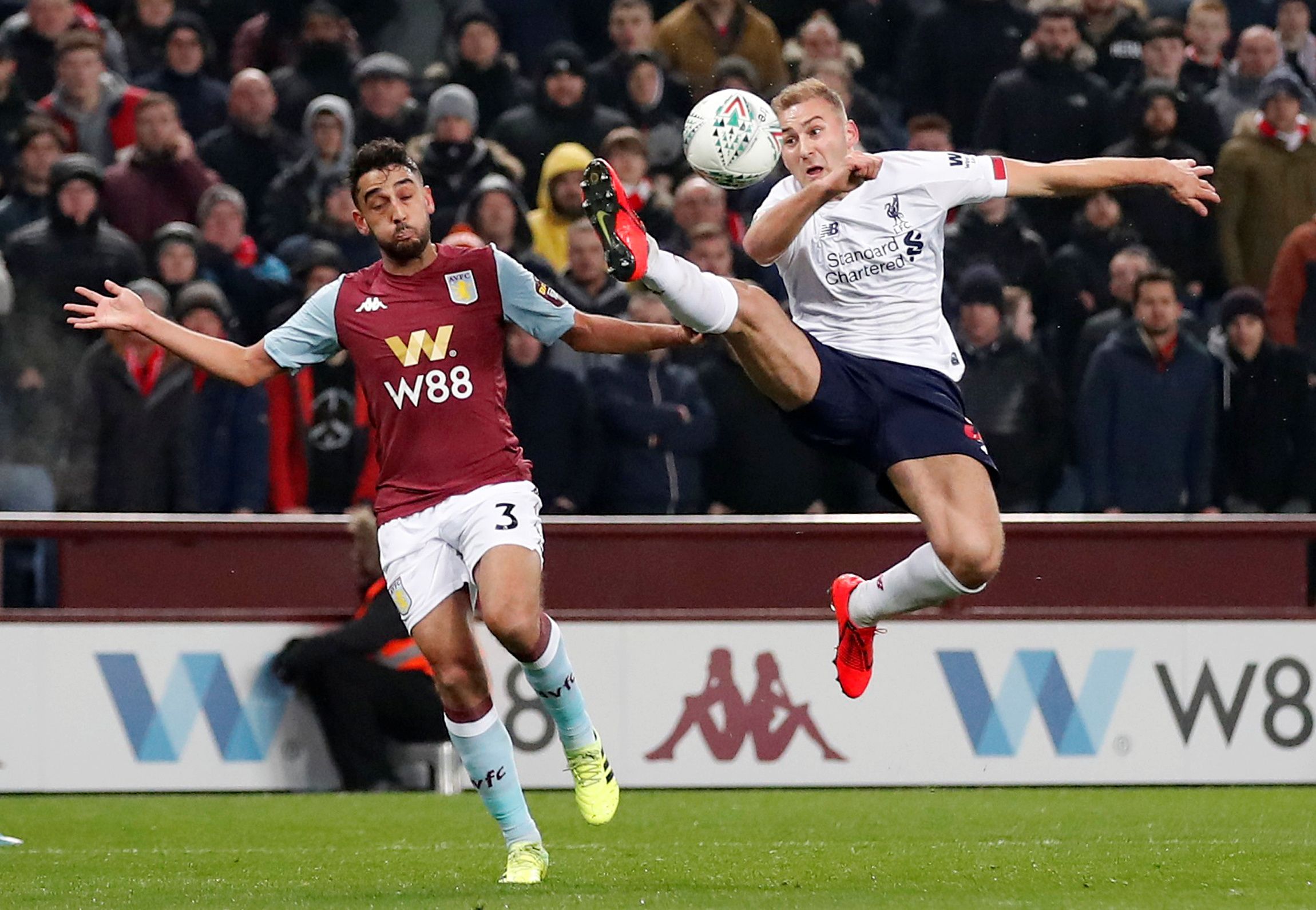Neil Taylor looked suspect for Aston Villa, despite their match against Liverpool ending in a resounding 5-0 victory.
On the chalkboard
Taylor has been unable to make his way past Matt Targett in the pecking order at left-back in recent times, with the former Southampton man starting every one of Villa's last 11 league games.
The Wales international was given his opportunity to turn Dean Smith's head in the Carabao Cup quarter-final, but it was the teenager he was up against, Harvey Elliott, who was making his mark on the game.
The 16-year-old made five key passes, looking a constant threat, while Taylor came across as a player who could be attacked with purpose. This is a worrying sign.
Watch Villa vs Norwich Live and Free with Amazon Prime on Boxing Day
Looking suspect
The 30-year-old didn't make a single tackle during the game and also failed to win either of his two ground duels, while he ended up committing two fouls.
He did complete two clearances and one interception, but that was about it for his defensive contributions.
It may seem as though his defensive side wouldn't be massively tested in a 5-0 win, but the scoreline is deceiving when it comes to measuring Liverpool's threat, as they ended up forcing eight saves from Orjan Nyland.
On the ball, Taylor lost possession 15 times and was unable to find a teammate with either of his crosses, while completing 76% of his attempted passes.
Red Herring or Real Hero: Only hardcore Villa fans will get all of them right....
It perhaps offers an indication of his performance level that he was given a SofaScore rating of 6.8, which was the joint-lowest of any Villa starter, alongside Henri Lansbury.
No matter who was on the pitch for Liverpool, having comfortably made their way into the semi-final, this can be seen as a great evening for Aston Villa.
However, it is not so certain that Taylor's performance can be looked upon with quite the same level of fondness.
In other news, FFC writers gave their opinion on whether Villa should move for their potential defensive reinforcement.

